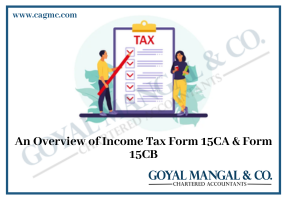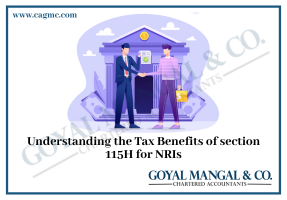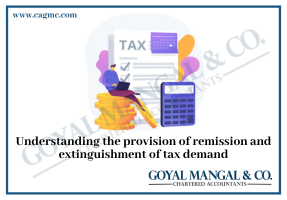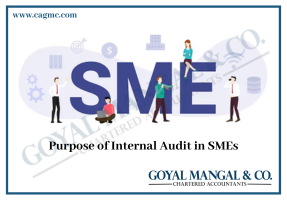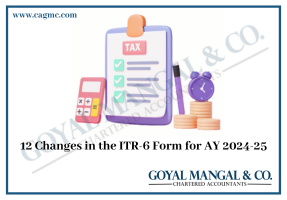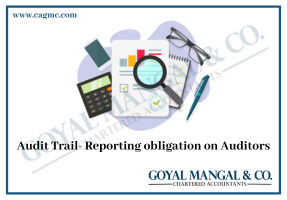
The Income Tax Act, 1961 provides various tax-saving options to taxpayers. Among these options, deductions under Section 80C, 80CCC, and 80CCD are some of the most popular ones. These deductions are available to individuals and Hindu Undivided Families (HUFs) who invest in certain specified instruments. In this article, we will discuss Deduction under Section 80C, 80CCC & 80CCD in detail.
Quick Look
Taxation is an important aspect of any economy, and in India, it is regulated by the Income Tax Act, 1961. Under this Act, taxpayers are provided with various provisions and exemptions to reduce their taxable income. One such provision is the deduction under sections 80C, 80CCC, and 80CCD of the Income Tax Act, 1961.
Deductions under sections 80C, 80CCC, and 80CCD provide taxpayers with an opportunity to reduce their taxable income and save taxes. However, it is important to carefully consider the investment options and understand the terms and conditions before investing. Taxpayers should also maintain proper records and provide accurate proof of investment to claim the deductions.
Let us discuss one by one Deduction Of 80C, 80CCC & 80CCD under Income Tax in great detail.
Deduction under Section 80C under Income Tax Act, 1961
Section 80C provides a deduction of up to Rs. 1.5 lakhs from the gross total income for individuals and Hindu Undivided Families (HUFs). The deduction is available for investments made in various instruments such as Public Provident Fund (PPF), Equity Linked Saving Scheme (ELSS), National Pension Scheme (NPS), Tax-Saving Fixed Deposits, etc. Additionally, payments made towards the principal amount of a home loan are also eligible for deduction under this section.
The following groups of individuals are eligible for a deduction under section 80C:
- Either an individual or a
- Hindu Undivided Family (HUF)
Allowed Deduction under Section 80C under Income Tax Act, 1961
The following are the deductions permitted by Section 80C:
- Life Insurance Premium: Any income received under the LIP will also be exempt, but only if the premium paid for life insurance on the individual, spouse, child, or any other insured person does not exceed 10% of the minimum capital sum promised.
- Investments in Tax Saving FDs: Tax-saving investments include those made in FDs. Fixed deposits made by residents are similar to conventional fixed deposits but include a 5-year lock-in term and a tax credit under Section 80C for contributions up to Rs 1.5 lakh. The lock-in period for fixed deposits is five years. The range of banks’ FD interest rates is 5.5% to 7%. The bare minimum investment is Rs 1000. Earned interest is taxed.
- PPF (Public Provident Fund) Investments: PPF are long-term investments supported by the Indian government. Section 80C allows for deductions for deposits made to PPF accounts. Both salaried and non-salaried Indian residents are eligible to open this. PPF accounts cannot be opened by HUFs. PPF accounts have a 15-year lock-in term that can be extended by an additional 5 years. After seven years, partial departures are permitted. 8.0% p.a. is the current interest rate. The minimum and maximum investment amounts are set at Rs. 500 and Rs. 1.5 lakh in this segment. Earned interest is tax-free.
- EPF (Employee Provident Fund) Investments: EPF is a retirement benefit program accessible to all salaried employees. Employers withhold 12% of the base pay plus DA and deposit it in the EPF or another recognized provident fund. Employees with a base salary of more than Rs.15, 000 per month are eligible to open this.
If a person leaves a job and does not reapply for work with an employer covered by the PF Act within two months, they may withdraw any remaining PF balance. During the fiscal year 2020–2021, the EPF’s interest rate is set at 8.5 percent. A minimum of 12% of Basic Salary + D.A. must be contributed by both the company and the employee. If taken out after five years of continuous service, the whole PF balance is tax-free.
- Investing in the NPS (National Pension System): The Indian government launched the NPS as a pension plan to give working professionals and members of the unorganized sector access to a pension after retirement. Under Section 80C, investments up to Rs 1.5 lakh may qualify for tax deductions. Every Indian citizen between the ages of 18 and 60 may open this. After 15 years, partial withdrawals are permitted, but only under specific circumstances. The NPS returns rate ranges from 12% to 14%. Maximum contributions are unlimited, and employer contributions are tax-free.
- ULIP (Unit Linked Insurance Plans) Investments: ULIPs combine investing with insurance. A portion of the money invested in ULIPs goes toward providing insurance, while the remaining money is put into stock market investments. Section 80C allows for tax deductions on ULIP investments up to Rs 1.5 lakh.
An investor may purchase a ULIP for themselves, their spouse, or their children. Because it is market-linked, interest rates fluctuate. The ULIP’s return rate ranges from 12% to 14%. There is no maximum contribution amount, and all investments, withdrawals, and maturities are tax-free.
- Investing in the Sukanya Smriddhi Yojana: It is one of the Government of India’s most well-liked programs. The program aims to improve the lives of girls throughout the nation. Up to the age of 10, parents or guardians may create an account in the name of a girl child. Once the girl reaches the age of 18, she can prematurely withdraw up to 50% of the deposit sum. Sukanya Samriddhi Yojana carries an 8.5% interest rate. Maximum investment per financial year is Rs. 1, 50,000. Taxes are not applied to investments, withdrawals, or maturity amounts.
- Home Loan Repayment: In accordance with clause 80C Tax deductions are allowed for principle payments made on loans used to purchase or build residential property. This deduction also applies to transfer costs, registration fees, and stamp duty.
- Tuition payments for Children: A tax deduction of up to Rs 1.5 lakh may be claimed for tuition fees paid for the education of two children. The fee may be paid to any school, college, university, or other educational institution located in India in accordance with the clause. Tuition costs are not included in the fees because the course must be taken full-time.
Deduction under Section 80CCC under Income Tax Act, 1961
Section 80CCC provides a deduction for the contribution made towards a pension plan. The deduction is available to individuals only and is limited to Rs. 1.5 lakhs per annum. The pension plan can be taken from any insurance company that is approved by the Insurance Regulatory and Development Authority of India (IRDAI).
The amount spent on acquiring a new insurance or payments made in relation to the renewal or continuation of an existing policy are included in the Section 80CCC exemption limit. The spending insurance must be a pension or annuity in order to qualify for this exemption.
When read in combination with Sections 80C and 80CCD (1), Section 80CCC sets a total release restriction of Rs. 1, 50,000 per year.
Terms and Conditions related with Section 80CCC Income Tax Deduction
The following are the terms and conditions outlined under the Act: –
- It is accessible to those who have added life insurance to their taxable income or paid a lump sum renewal.
- The policy must be paid for using the Section 10 (23AAB) money that was gathered.
- The accrual of interest or the earning of bonuses disqualifies them from Section 80CCC deductions.
- Any insurance-related income, such as a monthly pension, will be taxed in accordance with current laws.
- If the insurance is provided, the sum will also be less than the tax.
- Section 88 prohibits any withdrawals from pension plan investments made before April 2006.
- Before April 2006, deposits made into a bank account were not deductible.
Section 80CCC eligibility for Income Tax Deduction in India
The following are the exemption’s terms and conditions:
- One tax payer signed up for a pension plan offered by a recognized insurance provider.
- Under Section 80CCC, the HUF, or Hindu Undivided Family, is ineligible for the exemption.
- Both residents and non-residents are subject to these laws.
Important Information about Section 80CCC of the Income Tax Act, 1961
Here are some crucial details concerning how Section 80CCC is applied:
- To calculate the available catch, the catch restrictions stated in Section 80CCC are connected to Section 80C and Section 80CCD (1).
- The terms of Section 80CCC specifically apply to Indian insurance companies that offer pension or yearly income plans.
- Insurance is a category that can include both public and private businesses.
- Just the amount paid or the amount paid in the prior Examination Year is subject to deductions. For instance, if someone pays a lump sum over the course of two to three years, they can only claim the deduction for the portion of the payment that relates to the prior year.
- The annual maximum held under this category is Rs. 1,50,000.
- Personal contributions to certain pension plans offered by health insurance are eligible for deductions of Rs. 1.5 lakhs per year under Section 80CCC of the Income Tax Act, 1961. The deduction falls within the parameters of Section 80C.
- The amount spent on acquiring a new insurance or payments made in relation to the renewal or continuation of an existing policy are included in the Section 80CCC exemption limit.
- The spending insurance must be a pension or interim pension in order to qualify for this exemption.
- When read in combination with Sections 80C and 80CCD (1), Section 80CCC establishes a total release restriction of Rs. 1,50,000 per year.
Deduction under Section 80CCD under Income Tax Act, 1961
Section 80CCD provides a deduction for contributions made towards the National Pension System (NPS), Atal Pension Yojana (APY), and any other notified pension scheme. The deduction is available to both salaried and self-employed individuals and is over and above the deductions available under Section 80C.
The deduction under Section 80CCD is available in two parts:
- Deduction for contribution to NPS by an Individual: This deduction is available to an individual who contributes to the National Pension System (NPS). The maximum deduction allowed is 10% of the individual’s salary (in case of a salaried employee) or 20% of the gross total income (in case of a self-employed individual).
- Deduction for contribution to NPS by an Employer: This deduction is available to the employer who contributes to the National Pension System (NPS) on behalf of the employee. The maximum deduction allowed is 10% of the employee’s salary (basic salary + dearness allowance) in case of a salaried employee.
Who can claim a deduction under Section 80CCD?
According to Section 80CCD, the following people are entitled for deductions:
- Individual taxpayers who have made National Pension System contributions (NPS).
- Persons with salaries who have their employers make National Pension System payments (NPS).
- Self-employed people who have made National Pension System contributions (NPS).
- Each additional tax payer who made contributions to a pension plan that has been made public.
- It’s crucial to remember that the Section 80CCD maximum deduction cannot be greater than 10% of the taxpayer’s salary (in the event of a paid employee) or 20% of the gross total income (in case of a self-employed individual).
Claiming Deduction under Section 80C, 80CCC & 80CCD under Income Tax Act, 1961
To claim deductions under Sections 80C, 80CCC and 80CCD, the taxpayer needs to submit proof of the investments made and contributions paid towards pension plans/NPS to the employer or the Income Tax Department. The proof of investments can be in the form of receipts, statements, or certificates provided by the respective institutions.
To claim deductions under Section 80C, 80CCC, and 80CCD, the taxpayer needs to follow the steps below:
- Step 1: Determine the total eligible Amount: The taxpayer needs to calculate the total eligible amount that can be claimed as a deduction under these sections. This can be done by adding up the investments and expenses that fall under these sections. The maximum deduction allowed under all three sections combined is Rs. 1.5 lakh.
- Step 2: Submit proof of Investment and Expenses: The taxpayer needs to submit proof of the investments and expenses made during the financial year to the employer or the Income Tax Department, as applicable. This proof may include documents such as receipts, investment certificates, or statements.
- Step 3: Claim the Deduction: The taxpayer can claim the deduction while filing their Income Tax Return (ITR). They need to fill in the details of the investment and expenses made under the relevant sections and claim the deduction accordingly. The deduction claimed should not exceed the total eligible amount calculated in step 1.
Important Points to Note regarding Deduction Of 80C, 80CCC & 80CCD under Income Tax Act, 1961
The following are the important points to keep in mind:
- Deductions under Sections 80C, 80CCC, and 80CCD are only available to individuals and Hindu Undivided Families (HUFs).
- The deduction claimed under these sections is from the gross total income of the taxpayer, and not the taxable income.
- The investments made under these sections have a lock-in period, and premature withdrawal may attract a penalty.
- The taxpayer needs to keep all the documents related to the investments and expenses made under these sections for at least six years from the end of the financial year in which the investment was made.
- If the taxpayer has claimed deductions under Section 80C, they are not eligible to claim deductions under Section 80CCD (1B) for additional contributions made to the NPS.
Takeaway
Deductions under Section 80C, 80CCC, and 80CCD provide taxpayers with an opportunity to save tax while also investing in instruments that help them achieve their financial goals. By investing in the eligible instruments, taxpayers can reduce their taxable income and thereby reduce their tax liability. However, it is important to note that the investment should be made after considering the risks involved and the returns expected from each instrument.

